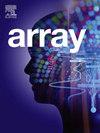Multi-objective game for fighting against Distributed Reflection DoS attacks in software-defined network
IF 2.3
Q2 COMPUTER SCIENCE, THEORY & METHODS
引用次数: 0
Abstract
Distributed Reflection Denial of Service (DrDoS) attack represents one of the most significant threats to network security. This cyber-attack exploits vulnerabilities in existing protocols by using a botnet to send forged query packets to more than one device which are used as reflectors. As a result, a stream of replies is sent to a victim node or subnet which overwhelms it. Several security measures have been proposed to counter such attacks, unfortunately, most of them do not consider the attacker’s dynamics. Furthermore, limiting the growth of the botnet could significantly reduce the impact of such an attack. In this paper, we leverage the advantages of software-defined networks (SDN) to propose a game-theoretic approach that predicts the defender’s best moves based on Nash strategies to mitigate this attack while avoiding botnet expansion. This approach is a non-cooperative multi-objective game between the attacker which aims to (1) compromise more nodes to scale the volume of its attack, (2) launch a volumetric-based DrDoS in the network, and the defender which aims to avoid it. This game results in a mixed-strategy Pareto-Nash equilibrium. It includes a player utility-based algorithm to detect malicious flows (or nodes) and drop them (or patch them). The results of the Matlab simulation show that the proposed model is an effective means of mitigating DrDoS attacks. To the best of our knowledge, this study is the first attempt to design a defense system based on multi-objective game to counter the effects of DrDoS in SDN.
软件定义网络中对抗分布式反射DoS攻击的多目标博弈
分布式反射拒绝服务攻击是网络安全面临的最严重威胁之一。这种网络攻击利用现有协议中的漏洞,利用僵尸网络向多个设备发送伪造的查询数据包,这些设备用作反射器。结果,应答流被发送到受害节点或子网,使其不堪重负。已经提出了几种安全措施来对抗此类攻击,不幸的是,它们中的大多数都没有考虑攻击者的动态。此外,限制僵尸网络的增长可以大大减少这种攻击的影响。在本文中,我们利用软件定义网络(SDN)的优势提出了一种博弈论方法,该方法基于纳什策略预测防御者的最佳移动,以减轻这种攻击,同时避免僵尸网络扩展。该方法是攻击者和防御者之间的非合作多目标博弈,攻击者的目标是(1)破坏更多节点以扩大攻击规模,(2)在网络中发起基于容量的ddos攻击,防御者的目标是避免攻击。这个博弈的结果是一个混合策略的帕累托-纳什均衡。它包括一个基于播放器实用程序的算法来检测恶意流(或节点)并删除它们(或修补它们)。Matlab仿真结果表明,该模型是一种有效的抵御ddos攻击的方法。据我们所知,这项研究是第一次尝试设计一个基于多目标博弈的防御系统来对抗SDN中ddos的影响。
本文章由计算机程序翻译,如有差异,请以英文原文为准。
求助全文
约1分钟内获得全文
求助全文

 求助内容:
求助内容: 应助结果提醒方式:
应助结果提醒方式:


